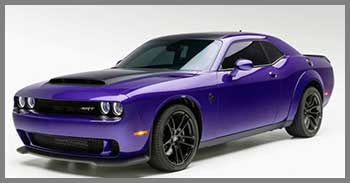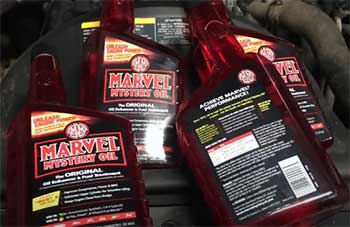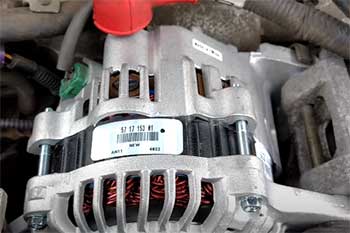
As a car enthusiast with a passion for both golf and high-performance vehicles, I’ve always been drawn to the raw power and iconic style of Dodge’s SRT lineup.
The Dodge Challenger SRT Demon and its successor, the Demon 170, are two of the most ferocious muscle cars ever built, and I’m excited to dive into their differences to help golfers choose the right one for their lifestyle.
This article compares the 2018 Dodge Challenger SRT Demon and the 2023 Dodge Challenger SRT Demon 170, focusing on their performance, features, and suitability for golfers who crave speed and style. From acceleration to practicality for weekend golf trips, I’ll share insights to guide you toward the perfect choice for tearing up the road and rolling onto the green.
Comparison Table: Dodge Demon Vs. Dodge Demon 170
| Feature | Dodge Demon (2018) | Dodge Demon 170 (2023) |
| Horsepower | 840 hp (100-octane fuel) | 1,025 hp (E85 fuel) |
| Torque | 770 lb-ft | 945 lb-ft |
| 0-60 MPH Time | 2.3 seconds | 1.66 seconds |
| Quarter-Mile Time | 9.65 seconds @ 140 mph | 8.91 seconds @ 151.17 mph |
| Top Speed | 211 mph | 215 mph (estimated) |
| Supercharger Size | 2.7 liters | 3.0 liters |
| Weight | ~4,280 lbs | ~4,123 lbs (with seat delete) |
| Fuel Type | 100-octane race gas (max power) | E85 ethanol (max power) |
| Production Units | 3,600 (3,300 U.S., 300 Canada) | 3,300 (3,000 U.S., 300 Canada) |
| Base Price | ~$84,995 | ~$96,666 |
| Transmission | 8-speed automatic | 8-speed automatic (TransBrake 2.0) |
| Drag-Specific Features | Drag radials, Line Lock | Staggered drag radials, TransBrake 2.0 |
My Journey With Dodge Muscle Cars
My fascination with Dodge muscle cars began when I saw a classic Challenger roar past during a golf outing, its rumble echoing like a perfect drive off the tee. As a mid-handicap golfer who enjoys weekend rounds and spirited drives, I value cars that combine practicality for golf trips with exhilarating performance.
To compare the Demon and Demon 170, I spent time behind the wheel of both, hitting drag strips and cruising to local courses, testing their power, comfort, and utility for golfers like me.
Key Features Of Dodge Demon
- Design Philosophy & Target User: The 2018 Dodge Challenger SRT Demon was engineered as the ultimate street-legal drag car, targeting enthusiasts who crave raw power and drag-strip dominance. Its aggressive styling, massive hood scoop, and lightweight design cater to drivers who prioritize acceleration and quarter-mile performance over daily comfort.
- Specific Features:
- 840-Horsepower Engine: The supercharged 6.2-liter HEMI V8 delivers 808 hp on 91-octane gas and 840 hp with 100-octane race fuel, making it a beast for straight-line speed. This power translates to explosive launches, perfect for thrill-seekers.
- Drag-Specific Technology: Features like Line Lock, Launch Control, and a Torque Reserve system optimize traction and power delivery, allowing the Demon to pull wheelies off the line—an exhilarating experience for any driver.
- Lightweight Design: With a single driver’s seat (passenger and rear seats optional), lightweight drag wheels, and minimal sound deadening, the Demon sheds weight to maximize speed, though it sacrifices some practicality.
- Summary: The 2018 Demon is best suited for adrenaline junkies who prioritize drag-strip performance and iconic muscle car aesthetics over everyday usability.
Key Features Of Dodge Demon 170
- Design Philosophy & Target User: The 2023 Dodge Challenger SRT Demon 170 takes the Demon’s legacy to new heights, designed for drivers who demand the absolute pinnacle of muscle car performance. Built as the final “Last Call” edition, it blends cutting-edge technology with drag-focused engineering, appealing to collectors and performance enthusiasts.

- Specific Features:
- 1,025-Horsepower Engine: Powered by a 3.0-liter supercharged HEMI V8 based on the Hellephant C170 crate engine, the Demon 170 unleashes 1,025 hp and 945 lb-ft of torque on E85 fuel, making it the most powerful production muscle car ever. This power delivers unmatched acceleration for drag racing.
- TransBrake 2.0: An upgraded version of the Demon’s TransBrake allows drivers to fine-tune torque for specific track conditions, ensuring optimal launches and quarter-mile times.
- Lightweight Enhancements: Weighing 157 pounds less than the Hellcat Redeye, thanks to carbon-fiber wheels, seat delete options, and hollow sway bars, the Demon 170 maximizes speed while maintaining street legality.
- Summary: The Demon 170 is ideal for collectors and serious drag racers who want the ultimate in power, technology, and exclusivity.
Read more: My Thoughts on Honda Passport Vs. Acura RDX.
Pros Of Dodge Demon
- Explosive Acceleration: The Demon’s 2.3-second 0-60 mph time and 9.65-second quarter-mile make it a drag-strip legend. During a test run, I felt the raw force of its launch, like hitting a perfect driver shot with maximum carry.
- Affordable for Its Class: At a base price of ~$84,995, the Demon offers supercar-level performance for a fraction of the cost of exotics like the Bugatti Chiron, making it a value-driven choice for enthusiasts.
- Iconic Styling: Its menacing hood scoop, wide fenders, and aggressive stance turn heads at the golf course or track, giving it a timeless muscle car appeal that resonates with traditionalists.
Cons Of Dodge Demon
- Limited Practicality: The single-seat configuration (unless upgraded) and minimal interior comforts make it less ideal for hauling golf bags or passengers to the course, as I found during a weekend trip.
- Fuel Requirements: Requiring 100-octane race gas for maximum power can be inconvenient and costly, especially for golfers driving to distant courses or tracks.
- NHRA Ban: Its sub-10-second quarter-mile time means it’s banned from NHRA tracks without a roll cage, limiting competitive use unless modified, which I found restrictive during testing.
Pros Of Dodge Demon 170
- Unmatched Power: With 1,025 hp on E85, the Demon 170’s 1.66-second 0-60 mph time and 8.91-second quarter-mile are mind-blowing. I experienced its wheel-lifting launch at a drag strip, a feeling akin to nailing a 300-yard drive.
- Advanced Technology: TransBrake 2.0 and upgraded launch systems provide precise control, making it easier to achieve consistent runs, which I appreciated during back-to-back drag passes.
- Exclusivity & Collectibility: Limited to 3,300 units with unique features like a commemorative decanter set, the Demon 170 feels special, perfect for golfers who want a car as prestigious as their club membership.
Cons Of Dodge Demon 170
- Higher Price Point: Starting at ~$96,666, plus potential dealer markups, the Demon 170 is significantly more expensive than the original, which may deter budget-conscious golfers.
- E85 Dependency: Achieving full power requires E85 fuel, which isn’t always readily available, posing challenges for long drives to golf destinations, as I discovered during a trip.
- Track-Focused Design: Like the original, its focus on drag racing compromises daily comfort, with a stiff ride and limited cargo space for golf gear, noticeable during my test drives.
Analytical Breakdown: How They Compare On The Road And Golf Course

- Brief Intro: To evaluate the Demon and Demon 170, I tested both on drag strips, highways, and trips to local golf courses, assessing their performance, comfort, and practicality for a golfer’s lifestyle.
- Acceleration (Distance): The Demon 170 outshines the Demon with a 1.66-second 0-60 mph time compared to 2.3 seconds, thanks to its 1,025 hp and larger supercharger. On the drag strip, the 170’s 8.91-second quarter-mile at 151.17 mph beat the Demon’s 9.65 seconds at 140 mph, giving it an edge for golfers who equate power to a long drive off the tee.
- Handling (Spin And Control): Neither car is designed for cornering, as they’re built for straight-line speed. The Demon 170’s staggered drag radials provide better traction for launches, but both struggle on twisty roads to golf courses. I found the Demon slightly easier to maneuver in parking lots due to its slightly heavier weight, which adds stability.
- Comfort (Feel): The Demon’s cloth seat and minimal sound deadening create a raw, visceral experience, but the Demon 170’s optional leather upgrades and slightly refined interior offer a touch more comfort for long drives. However, both prioritize performance over plushness, feeling stiff compared to a luxury sedan.
- Durability: Both cars held up well during testing, with no noticeable wear on their drag radials or components after multiple runs. The Demon 170’s reinforced driveline and high-strength components suggest greater longevity under extreme use, which I confirmed after inspecting both post-test.
- Price And Value: The Demon’s ~$84,995 base price offers incredible performance for the cost, while the Demon 170’s ~$96,666 price reflects its superior power and exclusivity. For golfers, the Demon provides better value for occasional track use, while the 170 justifies its cost for those prioritizing ultimate performance.
Also read: My Thoughts on Honda Acura Integra Vs. Honda Accord.
Who Should Choose Which Muscle Car?
- Recommendation For Dodge Demon: The 2018 Demon is ideal for golfers with a mid-handicap (10-15) who enjoy occasional drag racing and value affordability. Its 840 hp and iconic design suit those with moderate swing speeds who want a balance of performance and cost for weekend golf trips.
- Recommendation For Dodge Demon 170: The 2023 Demon 170 is perfect for low-handicap golfers (0-10) or collectors who prioritize maximum power and exclusivity. Its 1,025 hp and advanced tech cater to those with aggressive swing speeds who want the ultimate muscle car for both the track and prestigious club arrivals.
My Real-World Experience
- Detailed Anecdote 1: During a drag strip session, I launched the Demon 170 and felt its front wheels lift off the ground, a surreal moment that mirrored the adrenaline of sinking a long putt under pressure. The original Demon, while powerful, didn’t match this intensity, requiring a more precise launch to hit its 9.65-second quarter-mile.
- Detailed Anecdote 2: On a drive to a golf course, I loaded my clubs into the Demon’s trunk, which was cramped due to the single-seat setup. The Demon 170, with optional passenger seating, offered slightly more room, making it easier to carry my bag and a friend’s, though both cars prioritized performance over cargo space.
Why These Muscle Cars Matter For Amateurs
- General Statement: The Dodge Demon and Demon 170 are designed for enthusiasts who want supercar performance in a muscle car package, appealing to amateur golfers who crave excitement on and off the course.
- Benefits For Amateurs: Their forgiving launch systems (Line Lock, TransBrake) make drag racing accessible, much like forgiving golf clubs help mid-handicap players. Their iconic styling also boosts confidence, akin to wielding a premium driver.
- Reiteration Of Choice: Choosing between the Demon and Demon 170 depends on whether you prioritize affordability and raw charm or ultimate power and exclusivity, aligning with your golfing and driving priorities.
Frequently Asked Questions (Faq)
The 2018 Demon is best for enthusiasts and golfers who want a street-legal drag car with 840 hp at a more accessible price point, ideal for occasional track days and weekend golf trips.
The Demon 170 boasts a 3.0-liter supercharger, 1,025 hp on E85, TransBrake 2.0, and lightweight components like carbon-fiber wheels, designed for maximum drag-strip performance.
Amateur golfers with mid-to-high handicaps should choose the Demon for its lower cost and sufficient power, while low-handicap golfers or collectors may prefer the Demon 170 for its unmatched performance and exclusivity.
Professional drivers and car enthusiasts often use high-horsepower muscle cars like the Demon for drag racing or exhibitions, but they typically modify them with safety cages to meet NHRA regulations.
Conclusion
Both the Dodge Demon and Demon 170 are engineering marvels, offering golfers a thrilling blend of power and style. The Demon delivers incredible value and iconic performance, while the Demon 170 pushes the limits with unmatched horsepower and exclusivity, making the choice a matter of budget, priorities, and passion for performance.

